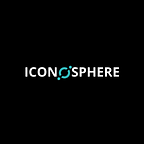How OMM compares with other deFI Protocols
Compound, Aaave, and OMM:
Decentralized Finance is different from traditional and centralized finance as it gets rid of legacy expenditure like that of prime office location, human intermediaries like brokers, bank clerks, and traders. Instead, it uses algorithms to execute financial transactions, such as lending and borrowing. Defi is still yet to be entirely regulated and thus is not required to maintain reserves funds of traditional financial institutions, which further reduces the cost. The marginalized and unbanked benefit because crypto loans generally involve no credit checks as transactions are backed by digital assets but there are a few inherent risks associated with blockchain technology. According to the New York Times, the DeFi movement aims to “disintermediate” finance, computer codes are used to eliminate the need for trust and middlemen from transactions. With the introduction of defi, the alternative financial system is gradually making inroads into traditional finance.
This way the savings can be passed on to the customers. This is a disruptive technology and there are many protocols that are being used in the defi space. Compound, decentralized, automated lending and borrowing system began in 2018 and now has more than $18 billion in assets earning interest. Compound defines itself as a decentralized protocol that establishes money markets with algorithmically set interest rates based on supply and demand, allowing users to frictionlessly exchange the time value of Ethereum assets. The compound was developed for the participants to be able to trade the time value of assets and to take care of or minimize the existing flaws in the money market. Compound creates properly functioning money markets for Ethereum assets.
Each money market has interest rates that are determined by the supply and demand of the underlying asset; when the demand to borrow an asset grows, or when supply is removed, interest rates increase, incentivizing additional liquidity. Users can supply tokens to a money market to earn interest, without trusting a central party. Users can borrow a token (to use, sell, or re-lend) by using their balances in the protocol as collateral.
Aave defines itself as an open-source and non-custodial liquidity protocol for earning interest on deposits and borrowing assets. Aave is a decentralized non-custodial liquidity market protocol where users can participate as depositors or borrowers. Depositors provide liquidity to the market to earn a passive income, while borrowers are able to borrow in an over collateralized (perpetually) or undercollateralized (one-block liquidity) fashion.
OMM is thus similar in many ways to compound and Aave. It introduces in the ICON ecosystem the many features that are available in the Ethereum environment. OMM is different from AAVE in terms of having a single collateralization ratio of 200%, while AAVE has different risk values for each asset. In OMM, an auction of a portion of the borrower’s supply is put up with a 10% bonus incentive to liquidators, and anyone who is able to provide a bad debt asset will be able to participate in the auction to collect the collateral with the 10% added bonus.
Whereas, in AAVE, simply up to 50% of a borrower’s debt is repaid and that value with additional liquidation fee is taken from the collateral available. With AAVE tokens, a borrower may wish to use a flash loan to take advantage of trading opportunities, vote on requested changes, vote on whether new cryptocurrencies should be added to the platform for lending and borrowing. Meanwhile, holders of OMM tokens can vote on more decisions related to governance like adjusting Max Loan to Value (LTV), setting Liquidation Threshold, designing Interest rate models, defining Interest rate parameters, providing Oracle address, distribution of Omm Worker Tokens (OWT), and addition/removal of a specific money market.
OMM and Balanced:
Balanced uses ICX as collateral which lets you borrow bnUSD. Balanced also has an exchange where users can swap between all the assets that are listed and also can supply liquidity for those listed assets. Where in OMM, users can supply various listed assets to earn interest & borrow assets for short-term loans, doing so will earn OMM tokens. One of the key differences between OMM and Balanced is that in OMM users can transfer their money from a bank account straight to OMM through Bridge (USDS).In OMM, users can borrow more after supplying a certain amount of assets in comparison to Balanced. OMM collateralization factor is 200% compared to balanced, which is at 300%.
What is next in OMM and after OMM?
OMM is expected to provide a high level of liquidity in the decentralized market. Once it becomes the widely accepted intermediate protocol for different tokens, its acceptance will gradually increase. Additional assets will be added through governance rights given to OMM holders. Different token pairs will be added to the OMM protocol on top of three existing pairs now. OMM will continue to explore the possibility of partnering with different blockchain environments for exchange and interoperability. Due to the very open and democratic process of governance, OMM is likely to refine existing features and add more features as it evolves. This way there will be a higher level of adoption with OMM reaching out more to the unbanked and marginalized, and thus the users of OMM and the market value of OMM token is likely to increase.
If you want to read Part 1 and Part 2 of this series please click on the respective links.
We could be grateful if you could find some time to go through this small survey we are doing to understand the OMM platform. Here’s the link — https://bit.ly/3zSZGZE
Thank you.
Try the new OMM platform if you have not already.
Follow the Social Media and Discord for more updates on OMM:
OMM Discord Channel.
OMM Twitter
Follow ICONOsphere PREP to get the latest updates on the ICON ecosystem.
